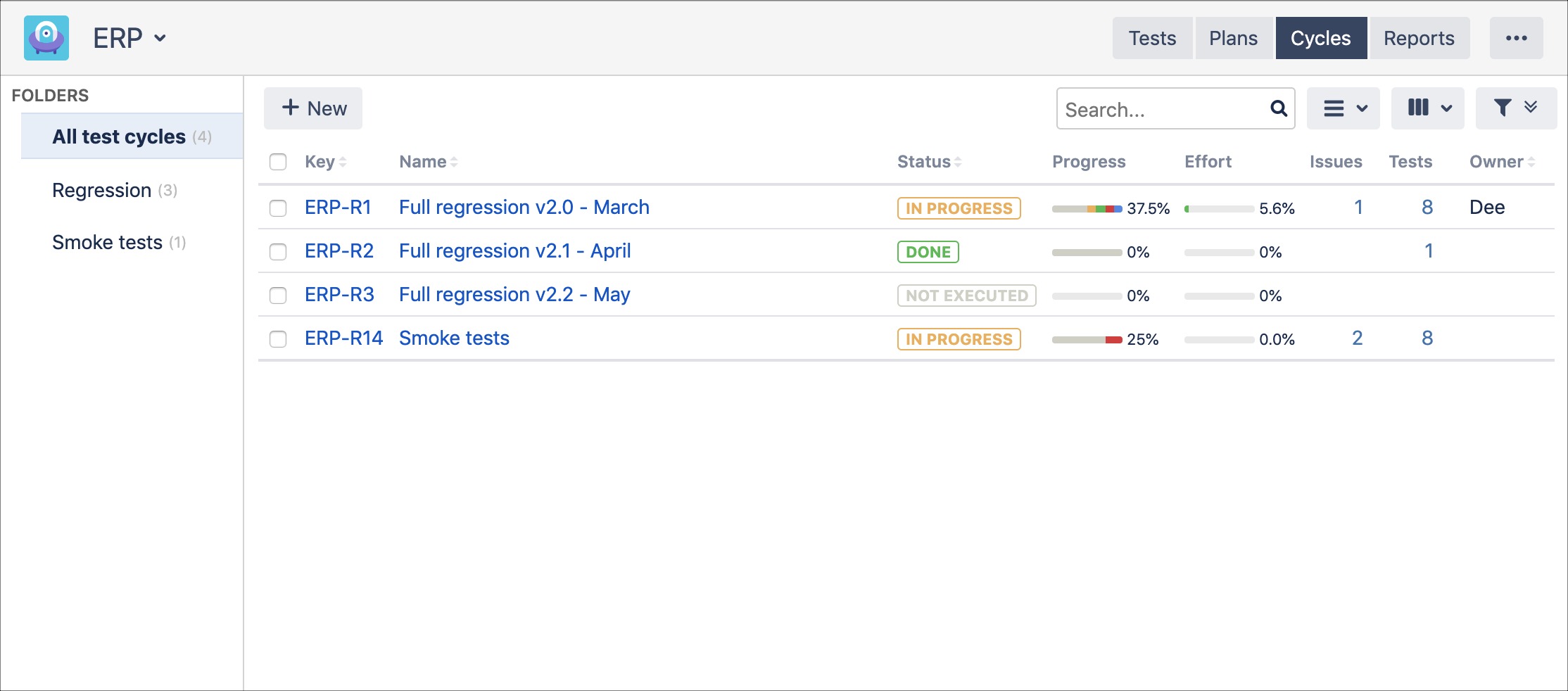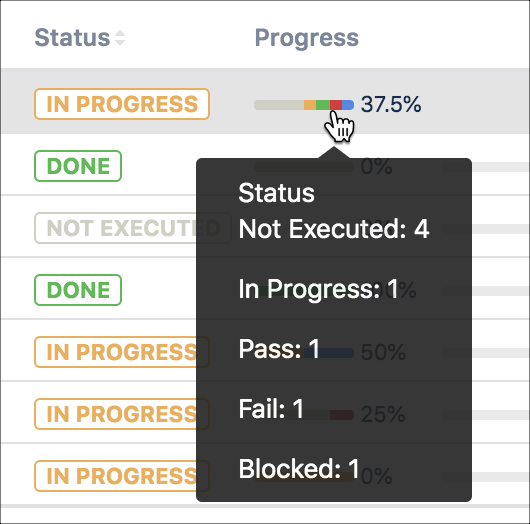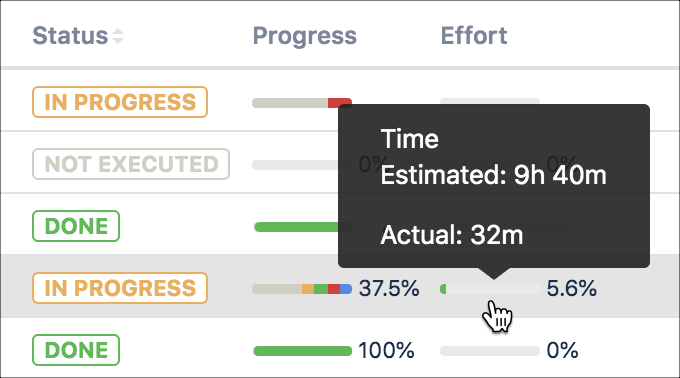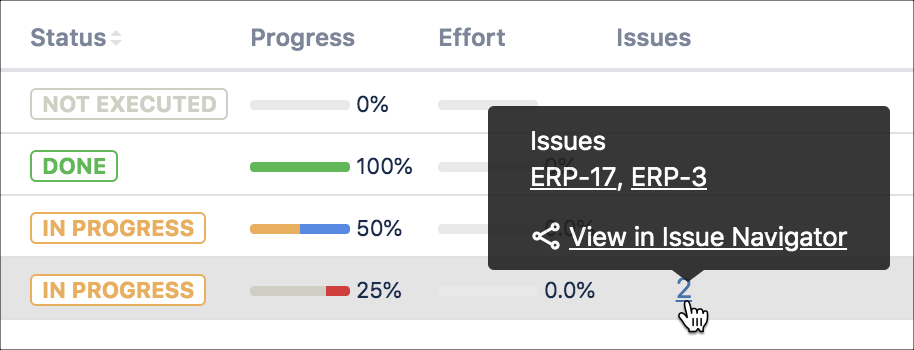A test cycle is a focused set of test cases that are grouped to achieve specific testing goals. Test cycles are larger and more broad in scope than test cases, and they can be assigned to specific testers and test environments. Examples of test cycles include regression tests, build-verification tests, end-to-end tests, etc.
Test cycles often make up parts of a test plan, which is used to track large-scale testing iterations, like an entire release or new version of your product.
Zephyr Scale supports traditional (waterfall) development and testing processes. Traditional approaches demand that you plan test assignment and execution in advance, sometimes even before any code has been released. Using Zephyr Scale, you have the ability plan who will execute what tests and when. When a test case is executed, the result is linked to the test cycle. The test case stores useful information, like the tester responsible for the execution, the execution date, the defects raised, the environment used, and the status of the execution (e.g., passed, failed, etc).
Test cycles allow you to track and compare estimated progress against the actual results in real time, during test execution.
From the Cycles view, you can see how your test effort is progressing, how time estimates compare to actual time spent testing, success and completion rates, issues raised, and more.

Some data in the Cycles view expands to show more specific information when you hover over the values.
For example, when you hover over a progress bar, you see a breakdown of all the test-case statuses within that test cycle.

Hover over an effort bar and you can view the estimated time as well as the actual time spent testing.

Hover over an issue value in the grid, and the list of issues associated with the test cycle—which are links to the issues themselves—appears.
